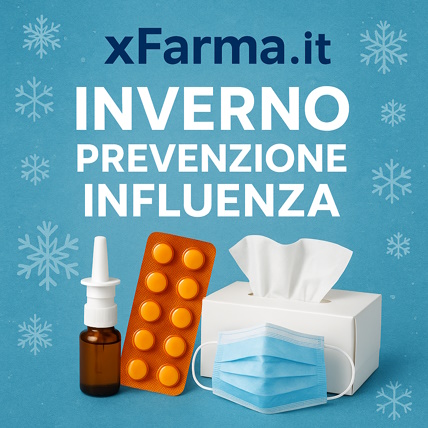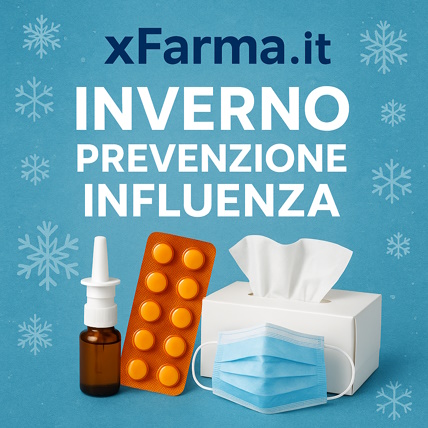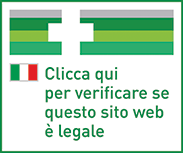Ship in Europe, Find out rates!
Dolhexal Gel 1% Diclofenac sodium Joint pain 50g

- box Delivery in Italy in 24/48 and free returns
- star3.000+ positive reviews
- dropboxOver 60,000 products in the catalog
Gel based on diclofenac sodium.
Therapeutic indications
Dolhexal Gel is used in the local treatment of painful and inflammatory conditions of a rheumatic or traumatic nature of the joints, muscles, tendons and ligaments.
Dosage and Posology
The drug should be taken according to the following doses and methods:
- Adults: apply 3 or 4 times a day on the area to be treated, rubbing lightly. The amount to be applied depends on the size of the affected part. For example, 2-4 g of Dolhexal (quantity of variable size between a cherry and a walnut) are sufficient to treat an area of 400-800 cm2. After application, rinse your hands, otherwise they will also be treated with the gel.
- Children and adolescents below 14 years There is insufficient data on efficacy and safety in children and adolescents below 14 years.
- Children over 14 years of age: In children aged 14 and over, if this product is needed for more than 7 days to relieve pain or if symptoms worsen, seek medical attention.
- Elderly: The usual adult dosage may be used.
Overdose
The low systemic absorption of topical diclofenac makes an overdose very unlikely. However, undesirable effects, similar to those seen after an overdose of diclofenac tablets, may be expected if topical diclofenac is inadvertently ingested (1 tube of 50 g contains the equivalent of 500 mg of diclofenac sodium). In the event of accidental ingestion resulting in significant systemic side effects, general therapeutic measures normally taken to treat poisoning with non-steroidal anti-inflammatory drugs should be undertaken. Gastric decontamination and the use of activated charcoal must be considered, especially within a short time of ingestion.
Contraindications
- Hypersensitivity to the active substance or to any of the excipients
- Patients who have experienced asthma attacks, urticaria or acute rhinitis after taking acetylsalicylic acid or other non-steroidal anti-inflammatory drugs (NSAIDs).
- Third trimester of pregnancy.
- Use in children and adolescents under the age of 14 is contraindicated.
Side effects
Adverse reactions (Table 1) are listed by frequency, most frequent first, using the following convention: common (≥ 1/100 to <1/10); uncommon (≥ 1 / 1,000 to <1/100); rare (≥ 1 / 10,000; <1 / 1,000); very rare (<1 / 10,000), not known: cannot be estimated from the available data.
- Disorders of the immune system
- Very rare: Hypersensitivity (including urticaria), angioneurotic edema.
- Infections and infestations
- Very rare: Rash with pustules
- Respiratory, thoracic and mediastinal disorders
- Very rare: Asthma
- Skin and subcutaneous tissue disorders
- Common: Rash, eczema, erythema, dermatitis (including contact dermatitis), pruritus.
- Rare: Bullous dermatitis
- Very rare: Photosensitivity reaction, allergic reactions
Pregnancy and breastfeeding
The systemic concentration of diclofenac compared with oral formulations is lower after topical administration. Referring to experience with NSAID treatment for systemic administration, the following is recommended: Inhibition of prostaglandin synthesis may adversely affect pregnancy and / or embryo / fetal development. Results of epidemiological studies suggest an increased risk of miscarriage and cardiac malformation and gastroschisis after use of a prostaglandin synthesis inhibitor in early pregnancy. The absolute risk of cardiac malformations increased from less than 1% to approximately 1.5%. The risk was believed to increase with dose and duration of therapy. In animals, administration of prostaglandin synthesis inhibitors has been shown to cause increased pre- and post-implantation loss and embryo-fetal mortality. In addition, an increased incidence of various malformations, including cardiovascular, has been reported in animals given prostaglandin synthesis inhibitors during the organogenetic period. During the first and second trimester of pregnancy, diclofenac should not be administered except in strictly necessary cases. If diclofenac is used by a woman attempting to conceive, or during the first and second trimester of pregnancy, the dose should be kept as low as possible and the duration of treatment as short as possible. During the third trimester of pregnancy, all prostaglandin synthesis inhibitors can expose the fetus to: - cardiopulmonary toxicity (with premature closure of the arterial duct and pulmonary hypertension); - renal dysfunction, which can progress to renal failure with oligohydroamnios; the mother and the newborn, at the end of pregnancy, to: - possible prolongation of the bleeding time, and antiplatelet effect which may occur even at very low doses; - inhibition of uterine contractions resulting in delayed or prolonged labor. Consequently, diclofenac is contraindicated during the third trimester of pregnancy.
Like other NSAIDs, diclofenac passes into breast milk in small amounts. However, no effects on the suckling child are anticipated at therapeutic doses of Dolhexal. Due to the lack of controlled studies in breastfeeding women, the product should only be used during breastfeeding under the advice of a healthcare professional. In this circumstance, Dolhexal should not be applied to the breasts of nursing mothers, nor elsewhere on large areas of skin or for an extended period of time.
Special warnings
The possibility of systemic adverse events with the application of topical diclofenac cannot be excluded if the limb prep is used on large skin areas and for a prolonged period (see summary of product characteristics of the sitemic forms of diclofenac). Topical diclofenac should only be applied to intact, non-diseased skin, and not to skin wounds or open lesions. It should not be allowed to come into contact with eyes or mucous membranes and should not be ingested. Discontinue treatment if skin rash develops after application of the product. Topical diclofenac can be used with non-occlusive dressings, but should not be used with an occlusive dressing that does not allow air to pass.
Expiry and retention
Check the expiration date indicated on the package. The expiry date indicated on the package refers to the product in intact packaging, correctly stored. No particular precautions for storage.
Warning : do not use the medicine after the expiry date indicated on the package.
Composition
1 g of Dolhexal Gel contains:
Active principle
Diclofenac sodium 10 mg
Excipients
Alpha-tocopherol; carbomer; decyl oleate; octyldodecanol; lecithin / isopropyl alcohol; ammonia, 10% solution; sodium edetate; “vert de creme” perfume; isopropyl alcohol; purified water.
| Destination | Cost | Detail |
|---|---|---|
| Italy | €5,90* | 24/72H |
| Austria, France, Germany, Slovenia | € 13* | 3 days |
| Belgium, Luxembourg, Portugal, Netherlands, Spain | € 14* | 4 days |
| Bulgary, Cechia, Hungary, Poland, Romania, Slovakia | € 19* | 5 days |
| Denmark, Estonia, Finland, Ireland, Lithuania, Latvia ,Sweden | € 22* | 5 days |
| United Kingdom, Switzerland, Greece, Malta/td> | € 30* | 7 days |
| Canada | € 40 | 7 Days |
European shipments with express courier: FedEx, MBE, DHL
*For the shipment outside band B ther's an extra cost of 22€ *For the shipment outside band C ther's an extra cost of 30€ Delivery Times exclude Saturday and Holidays
For Islands and Areas of difficult Accessibility the shipments are made in 72 hours and the cost will be increased by 15€


